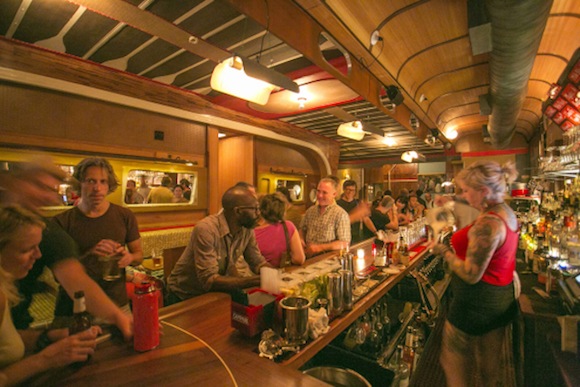
From Norman Mailer to Edgwidge Danticat to that guy from that OkCupid date who writes thinkpieces on Encino Man, Brooklyn has a long history of producing, housing and inspiring great authors and literary works. So naturally, there’s plenty of great literature that takes place around these parts. Here’s an introductory list of Brooklyn-based books, and where in the borough you should enjoy them for an optimum reader experience. But you don’t have to take my word for it…
The Love Affairs of Nathaniel P. by Adelle Waldman
Believe the hype about the almost absurdly well-reviewed must-read of last summer. Adelle Waldman’s Nate is a compelling and often painfully realistic character. As he forges his hard-earned literary career, he and his friends are constantly in and out of ill-advised trysts with other players in their Brooklyn literati circle. His internal monologues and narcissistic justifications will make you cringe not because he’s kind of a dick (he is) but because of how closely they resemble the dysfunctionality of your own past love affairs. Nathaniel P. is someone you’ll love to hate, because you hate that you loved a self-indulgent intellectual snob like him once(ish.) Heck, you’ve probably been that guy before. The story takes place at Bedford-Stuyvesant studio apartments, bike rides through Prospect Park, and too many bars in the vicinity of Gowanus, Park Slope, Clinton Hill and Fort Greene, providing a brutally but refreshingly honest portrayal at the trials and tribulations of modern love in the city.
Where to read it: Splitty (415 Myrtle Avenue), one of our favorites, fits the description of the Myrtle Avenue bars Nate and his cohorts frequent. Its stylishly cozy interior still has dark, dive-y vibes, and it attracts some smarty-pants clientele. They always offer a $5 beer-shot combo deal and recently introduced a pretty awesome brunch, where you can nurse your hangover while discussing your literary pretensions with your flavor-of-the-week (if you like them enough).
________________________
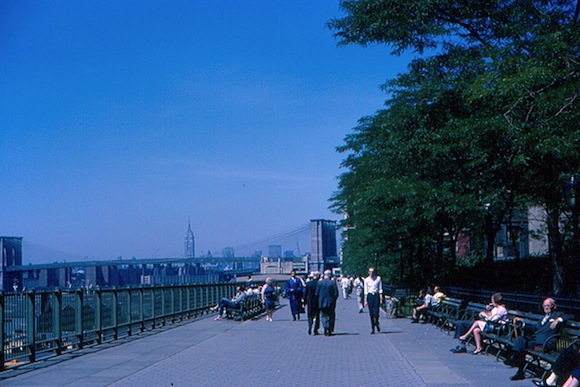
Desperate Characters by Paula Fox
Paula Fox’s satirical and suspenseful 1970 novel provides a brief glimpse into the lives of a childless middle-aged couple in Brooklyn Heights, unraveling as the world around them does the same. As gentrifiers in the late 1960s, Mr. and Mrs. Bentwood find themselves unprepared to deal with their changing neighborhood, and questioning whether seeking meaning through writing in a chaotic world is a worthless endeavor (eesh.) After a series of bizarre and unfortunate events befalls them, curmudgeonly Otto and flighty Sophie begin to feel cursed. Sophie is bitten by a cat that won’t stop showing up at their apartment, she sneaks out with her husband’s former business partner to a Clark St. bar when he appears at their door in the middle of the night, and her erratic and obsessive behavior creates a heavy sense of dread throughout the narrative. The Bentwoods’ fraying psyches mirror the atmosphere of an era plagued with rampant crime and dismal uncertainty towards the fate of the arts and of the city– a not unfamiliar concept.
Where to read it: The Brooklyn Heights promenade. Reflect on how much the neighborhood has changed since the Bentwoods resided there, and imagine what it would be like if you, too, could live in a Brooklyn Heights brownstone. You know, if the rent wasn’t so criminal.
________________________
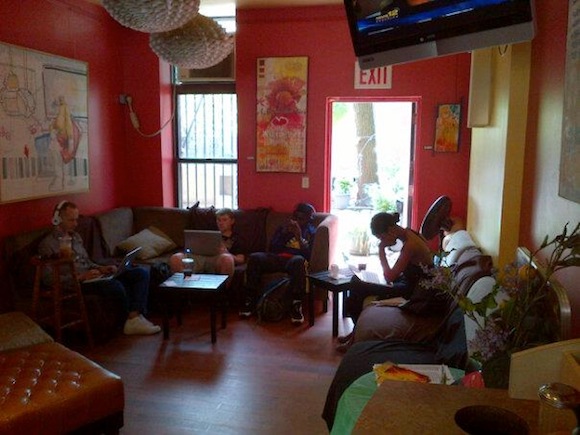
Brown Girl, Brownstones by Paule Marshall
This coming-of-age tale was unprecedented at the time of its release in 1953. Brown Girl, Brownstones follows Selina Boyce, the daughter of Barbadian immigrants who have come to Brooklyn in search of the ever-elusive American Dream. Set in Bedford-Stuyvesant, the stories take a look at black immigrant life in Brooklyn from the Great Depression to World War II. The book tackles themes of religion, heritage, sexuality, racism, and poverty as Selina strives to find her own identity amidst the dire obstacles she faces. She questions where she fits into her neighborhood, what the concept of home truly means to her and where that is. It addresses an age-old quandary of living in Brooklyn: after experiencing the city, can you live anywhere else?
Where to read it: Grab a coffee at Common Grounds (376 Tompinks Avenue), and see Bed-Stuy’s brownstones yourself in its proposed historic district, which spans the blocks between Gates Ave., Fulton St., Bedford Ave. and Tompkins Ave.
________________________
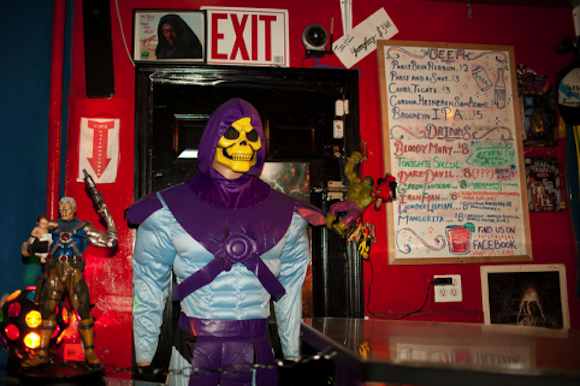
The Amazing Adventures of Kavalier and Clay by Michael Chabon
The Amazing Adventures of Kavalier and Clay tells the epic saga of two Jewish cousins, Joe Kavalier and Sammy Layman, who are thrown together in Flatbush in 1939 after Kavalier flees Czechoslovakia in the wake of Nazi occupation. The two go on to found Empire Comics and become driving forces in the golden era of American comics. The sprawling, boundlessly entertaining tale of their lives before, during, and after the war is one of love, unfathomable loss, and adventure. Often hailed as Michael Chabon’s magnum opus, the novel won the 2001 Pulitzer Prize for Fiction. Well deserved.
Where to read it: Where else but Bushwick’s own Batcave, Gotham City Lounge (1293 Myrtle Avenue, Bushwick)? Well, you could probably read it somewhere a little more well-lit, but somewhere else won’t be a true dive bar that happens to be wallpapered with vintage comics and laden with superhero paraphernalia. And you can’t beat the prices– they have a $3 PBR-and-shot special. This is not a drill..
________________________
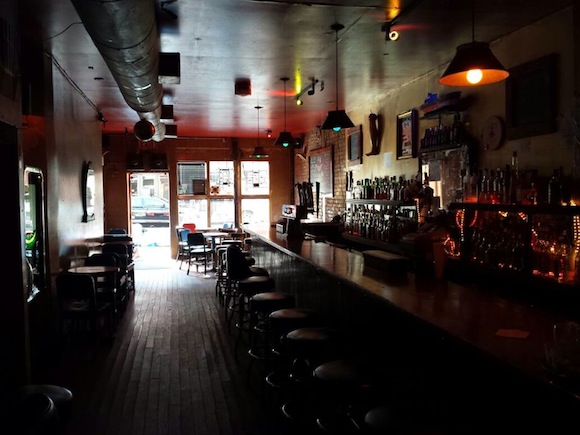
Friendship by Emily Gould
Friendship, the first fictional work by former Gawker editor and prolific personal blogger Emily Gould, delves into the complicated world of platonic female bonds that women forge in their late 20s/early 30s, a la Frances Ha. Bev and Amy are both writers working temp jobs and quickly become inseparable after meeting. The pair partakes in plenty of debauchery and struggles to navigate unprecedented situations and responsibilities in their lives. They get drunk on fire escapes while admiring the view of the BQE, they’re unreasonably leery towards the prospect of living in smaller cities, they argue about a perceived interloper in their friendship in the middle of Brooklyn Flea, one reacts coldly to the other’s unplanned pregnancy. The characters’ shameless self-involvement can be hard to swallow at times, but their messy dynamic is highly believable in this portrayal of friendship between single women still figuring it out in Brooklyn.
Where to read it: If you’re like either of these main characters (or reading this blog, for that matter) you’re probably a fan of doing things on the cheap, particularly drinking. We’d suggest posting up at Boat (175 Smith Street) in Cobble Hill, where you can let that lengthy to-do list slide for one more night at their $4 draught beer-and-well drink-happy hour..
________________________
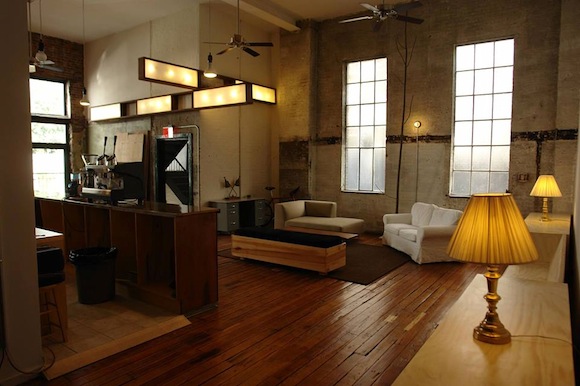
A Tree Grows in Brooklyn by Betty Smith
Betty Smith’s inspiring novel about old bad-old-days in early 20th century Brooklyn is well worth the read. It chronicles the early life of Francie Nolan and her immigrant family as they struggle to overcome tremendous hardship while living in a tenement in Williamsburg. Ever-ambitious Francie works as a child laborer in a factory, helping support her family while seeking an education difficult for young women to obtain at the time. Her complicated relationship with her mother is examined through tales of both their lives and aspirations as the story goes back and forward through time. Overall, it’s an excellent piece of historical fiction about the lives of European immigrants in your borough a century ago. You’ve lived here how long without reading this literary classic?
Where to read it: With a cup of tea at Williamsburg’s airy 66 Hope Cafe (66 Hope Street), where, regardless of whatever contempt you have for modern-day Williamsburg, you should feel grateful for all the nice things you have.
________________________

Motherless Brooklyn, by Jonathan Lethem
Native son Jonathan Lethem’s noir detective novel features a narrator with Tourette’s syndrome, a noteworthy spin that never feels too gimmicky or heavy-handed, though it easily could. Lionel Essrog is a member of a rogue neighborhood detective agency run by gangster Frank Minna. His empire spans across Carroll Gardens and Cobble Hill, and as far as Essrog is concerned, that’s the only Brooklyn there is (“everything east of the Gowanus Canal…apart from small outposts of civilization in Park Slope and Windsor Terrace, was an unspeakable barbarian tumult.”) When Minna is murdered, Lionel and his cohorts embark on a frantic search to find the killer. Edward Norton is making it into a movie next year, so read it posthaste even if his adaptation will be set in the ’50s rather than 1999..
Where to read it: 61 Local (61 Bergen Street) in Cobble Hill, a neighborhood public house on the same block as a fictional car dealership from the novel. They have a rotating selection of reasonably priced, mostly New York-brewed craft beers and great snacks. We recommend the $5 beer pretzels with beer cheese. Stop by The Invisible Dog Art Center‘s industrial space a few buildings down while you’re in the vicinity.
________________________

Last Exit to Brooklyn, by Hubert Selby Jr.
Last Exit to Brooklyn was highly controversial at the time of its 1964 release, due to its grim portrayal of Brooklyn’s slums after WWII. The book is divided into six separate short stories, each providing a look into the lives of its depraved characters. The tales are graphic, deeply unsettling, and by no means an easy read (seriously, Selby is heavy on the caps lock.) Needless to say, it’s a cult classic.
Where to read it: Pier 44 Waterfront Garden (290 Conover Street) in Red Hook, which is in proximity of where most of the stories are set. It’s a really nice park, but the view of the Army Terminal and surrounding warehouses can provide an eerie vibe…maybe.
________________________
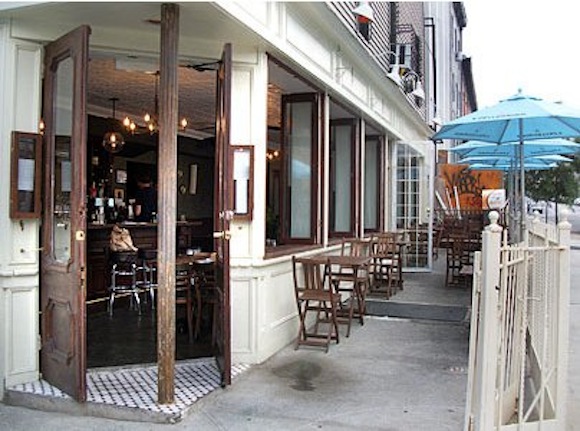
Tropic of Capricorn, by Henry Miller
Due to its explicit nature, Tropic of Capricorn was banned in the United States until the early 1960s. It’s easy to see why– in this semi-autobiographical novel, cynical, egotistical protagonist Henry (coincidence?!) bounces from job to job in post-World War I Williamsburg, contemplating the futility of existence with crazed, profane poeticism. Oh, and having tons of sex and describing it in great detail. As you may have already surmised, Miller is a notoriously divisive author. If you’re on the “love” side of the fence, check out Tropic of Cancer and Black Spring, the other volumes of his Tropic trilogy..
Where to read it: Though Miller apparently wasn’t the biggest fan of Brooklyn, he spent his early life at 662 Driggs St. If you’re cool with being in public while reading about wild sexual exploits, the obvious choice is to go to Miller’s Tavern (2 Hope Street, Williamsburg). Their drafts and cans/bottles are almost all $5 or less. You can get to it by walking down Fillmore St. from his former homestead, which he described as “a street of value, of dignity, of light, of surprises.”
Follow Shaylyn for more literary adventures at @berlewnatic
3 Comments
Leave a Reply




Are you fucking kidding me with his list? All the bars are located in 1/8th of Brooklyn—each one in a hipster douchebag neighborhood. Kavalier and Clay lived in FLATBUSH, why the ultra-hip Bushwick bar? What, no books based in other Brooklyn neighborhoods? Requiem for a Dream? The Assistant? Sophie’s Choice? Last Exit To Brooklyn? Just a few that I have on my shelf? Good job, guys. The whole world revved on a small portion of Brooklyn, while the other 1.25 million live in the disregarded part.
I’d quibble with your definition of the Gotham City Lounge as an ultra-hip Bushwick bar. I’d also quibble with your characterization of our list not containing ‘Last Exit to Brooklyn.’ Here, let me help you with that:
Last Exit to Brooklyn, by Hubert Selby Jr.
Last Exit to Brooklyn was highly controversial at the time of its 1964 release, due to its grim portrayal of Brooklyn’s slums after WWII. The book is divided into six separate short stories, each providing a look into the lives of its depraved characters. The tales are graphic, deeply unsettling, and by no means an easy read (seriously, Selby is heavy on the caps lock.) Needless to say, it’s a cult classic.
Where to read it: Pier 44 Waterfront Garden (290 Conover Street) in Red Hook, which is in proximity of where most of the stories are set. It’s a really nice park, but the view of the Army Terminal and surrounding warehouses can provide an eerie vibe…maybe.
I was sorry not to see “The Chosen” by Chaim Potok. I read it not too long ago when it was assigned to my son when he was freshman at Brooklyn Tech and loved it. Great coming of age story and also interesting peek into life in the Williamsburg Orthodox and Hasidic communities in the 1940s. Where to read it? Probably in Williamsburg but failing that, maybe sitting on a bench on Eastern Parkway on a Friday afternoon.